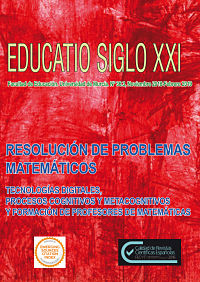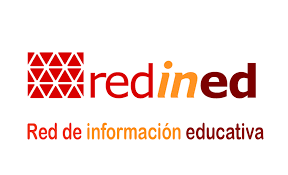Mathematical problem solving and the use of digital technology for interactive book design
Abstract
Textbooks are an essential resource that teachers use to organize and guide their students’ learning of mathematics. In general, textbooks help students review and extend their knowledge of the themes that they study in their courses. Digital technology developments are transforming the ways in which textbooks are designed since this technology fosters the inclusion of interactive activities where students can consult videos to review and extend concepts, access and discuss online materials and share and discuss ideas or problem solving approaches within a learning community that include their peers or other students. In this article, we present a framework that aims to help teachers design interactive textbooks via the identification of main problem solving episodes such as understanding the problem statement and the construction of dynamic representations, looking for different ways to solve the problem, extending the initial problem, and communicating results.
Downloads
-
Abstract3049
-
PDF (Español (España))2943
References
Johnson, H. L., Coles, A. & Clarke, D. (2017). Mathematical tasks and the student: Navigating “tensions of intentions” between designers, teachers, and students. ZDM Mathematics Education, 49: 813-822. DOI 10.1007/s11858-017-0894-0
Leung, A. (2008). Dragging in a dynamic geometry environment through the lens of variation. Int J Comput Math Learning, 13: 135-157. DOI 10.1007/s10758-008-9130-x
Leung, A. (2017). Exploring techno-pedagogic task design in the mathematics classroom. En A. Leung & A. Baccaglini-Frank (eds.), Digital technologies in designing mathematics education tasks, pp. 3-16. DOI 10.1007/978-3-319-43423-0. Switzerland: Springer.
Howson, G. (2013) The development of mathematics textbooks: historical reflections from a personal perspective. ZDM Mathematics Education, 45:646-658. DOI 10.1007/s11858-013-0511-9.
Santos-Trigo, M. (2014a). Problem solving in mathematics education. En S. Lerman (ed.), Encyclopedia of Mathematics Education (pp. 496-501). NY: Springer.
Santos-Trigo, M. & Reyes, I. (2016) El Estudio de fenómenos de variación y el empleo de herramientas digitales. https://itunes.apple.com/do/book/interactive-problem-solving-activity-cat-ladder/id688897073?mt=11
Santos-Trigo, M y Camacho-Machín, M. (2013). Framing the use of technology in problem solving approaches. The Mathematics Enthusiast, 10(1-2), 279-302
Santos-Trigo, M. & Reyes-Martínez, I. (2014). The coordinated use of digital technology in learning environments. In L. Uden et al. (Eds.), Learning Technology for Education in Cloud (pp. 61-71). Communication in Computer and Information Science, 446. NY: Springer.
Schoenfeld, A. H. & Kilpatrick, J. (2008). Toward a theory of proficiency in teaching mathematics. In T. Wood & D. Tirosh (eds.), International handbook of mathematics teacher education: Vol. 2. Tools and processes in mathematics teacher education, pp: 321-354. Rotterdam, The Netherlands: Sense Publishers.
Watson, A. & Ohtani, M. (2015). Themes and issues in mathematics education concerning task design: Editorial introduction. En, A. Watson & M. Ohtani (eds.), Task design in mathematics education, pp. 3-15: DOI 10.1007/978-3-319-09629-2_1. London: Springer.
Original work publishes in this journal is subject to the following terms:
1. Murcia University Press (the publishing house) holds the copyright of the publishes work, and favours and allows their reutilization under the use license stated in point 2.
© Servicio de Publicaciones, Universidad de Murcia, 2015
2. Work is published in the electronic edition under a license (Creative Commons Reconocimiento-NoComercial-SinObraDerivada 4.0 España (legal text). They can be copied, used, disseminated, transmitted and publicly presented, as long as: i) authorship and original publication source is acknowledged (journal, publishing house and URL of the work); ii) are not used for commercial purposes; iii) the existence and specifications of this use license is stated.
3. Conditions for self-archive. Authors are allowed and encouraged to disseminate electronically the pre-pint (before review) and/or post-print (accepted for publication) versions of their work before their publication since that favours earlier circulation and dissemination resulting in an increased chance for the authors to be cited and for the work to reach a bigger share of the academic community. Colour: RoMEO: green.








